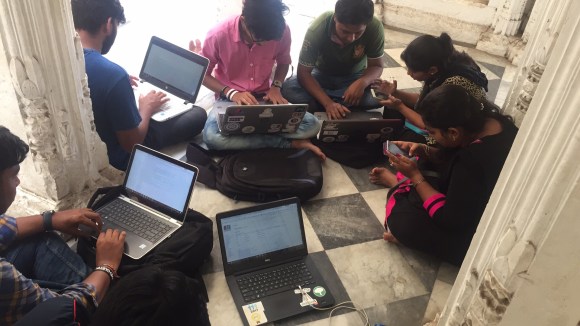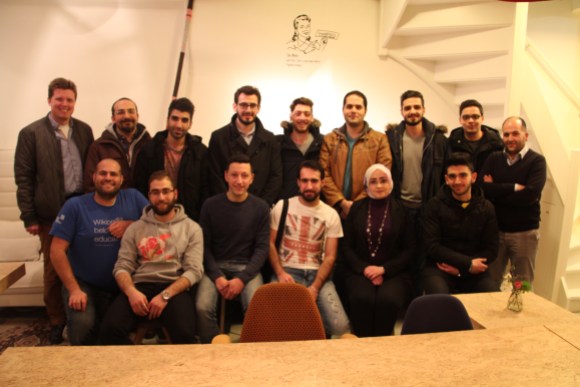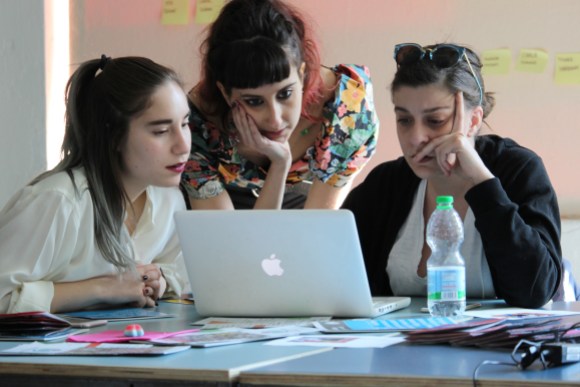What is Creative Commons? Video by Victor Grigas, CC BY-SA 3.0. You can also view it on Vimeo or Youtube.
One of the simplest requirements for using freely-licensed photos from Wikimedia Commons is to give credit to whoever created the material. But even this is not easy for users to comply with if they aren’t familiar with Creative Commons licenses and the right wording for license labels.
As opposed to those under copyright, freely-licensed photos on Wikimedia Commons are available to the world. Anyone can use them, for free, in printed material, blogs, social media channels, etc., without getting permission from the photographer—but with some stipulations, including attribution.
Wikimedia Germany (Deutschland), the independent chapter that supports Wikimedia in Germany, wants to show you how easy it is to re-use these freely licensed works. We have created a web tool to simplify these stipulations—and it’s as simple as copy and paste.
This license notice should include the author’s name and the license type. Creative Commons licenses have clear legal requirements, but they’re not always easy to interpret when the photos are being reused. Attribution requirements for the license notices can be hidden in “legalese,” which can be a challenge for the layman to decipher even with the best of intentions. Moreover, missing information can have serious legal repercussions! Even accidental non-compliance with license requirements can lead to copyright infringement.
An easy way to follow the rules with a ready-to-copy license label
The attribution generator is a new tool by Wikimedia Germany. The tool automatically compiles the license information. The user just needs to answer a few simple questions: Do you want to use the image digitally or in print materials? Have you modified the photo? Is it going to be used alone or with multiple images? The correct license notice is then generated after the user answers these questions.
Video by Benjamin Wüst/Wikimedia Germany (Deutschland), CC BY-SA 4.0.
This short video, available in German (with English subtitles on Commons), shows how easy it is to create the license notice for an image with the Attribution Generator. In addition, Dr. Till Jaeger, a specialist attorney in copyright and media law, briefly explains the benefits of Creative Commons licenses. Dr. Jaeger collaborated with Wikimedia Germany in developing the Attribution Generator.
At the time of this writing, the Attribution Generator is only available in German and English. To get the word out about the Attribution Generator internationally, we need your help! Our goal for the tool is to make it available in as many languages as possible so that everyone can easily use freely-licensed images. Help us translate the Attribution Generator into your language. You can find details on how it works on Wikimedia Commons. You can also contact us via email.
Katja Ullrich, Project Manager for the Attribution Generator
Wikimedia Germany (Deutschland)
In photos

A Wikidatathon was organised during the 7th WikiTungi Puri meetup. The goal of the Wikidatathon was to translate labels and descriptions of the articles created so far on Women’s History Month Editathon on Odia Wikipedia. Eight Wikimedians joined the event, where they translated nearly 220 labels and descriptions.

On March 10, 2017, Zwolle, Netherland hosted an introductory workshop to Wikipedia. The Workshop was attended by a group of fourteen Syrian refugees and migrants to the Netherlands. The workshop was held in Arabic.

This month, Wikimedia Italy organized six Art+Feminism Wikipedia edit-a-thons in Milan, Florence, Rome, Battipaglia, Venice and Potenza. More than 100 participants attended the events and more than 80 articles on female artists and their productions were created or improved.
In brief
Arabic book about Wikipedia: Wikipedian Abbad Diraneyya has published a new book about Wikipedia. This book discusses how Wikipedia works, how to edit on the website, and the author’s personal experience with it. It took Diraneyya over three years to compile the the book. However, the book is free to download and is available under CC BY-SA 3.0, the same free license used for Wikipedia’s content.
WikiLesa encourages Argentinian students to edit about human rights: Over the past two years, Wikimedia Argentina held four editing events for the project WikiLesa. The project aims at improving Wikipedia’s content on human rights violations during the (1976–1983) military dictatorship. Wikimedia Argentina worked in partnership with a local media agency specialized in human rights where they worked together on training students, educators and researchers on Wikipedia editing. 54 Wikipedia articles have been improved while 21 new ones were created as part of this project. More about the project on the This Month in Education newsletter.
.
DARM challenge helps with nearly 2,200 photo uploads on Wikimedia Commons: Between 25 December 2016 and 25 January 2017, the Wikipedian in Residence at DARM (National Archive of the Republic of Macedonia), in collaboration with the State Archive, helped coordinate the DARM challenge. As part of this challenge, 2,190 files were uploaded to Wikimedia Commons by sixteen Wikipedians. The photos have been used on nearly 1,400 pages on Wikipedia in 33 different languages. More about the project on Wikimedia’s GLAM newsletter.
Wikipedia Education Program kicks off in Finland: The Finnish Wikipedia community and Wikimedia Finland (Suomi), the local chapter, are getting ready to support the first regular Wikipedia courses in their country. The courses will be hosted by the University of Helsinki and the University of Jyväskylä starting in the next academic year. More about the courses in the This Month in Education newsletter.
Embassy of Sweden in New Delhi hosts a ‘women in science’ editathon: On 4 March, the Embassy of Sweden in New Delhi hosted an editathon on Indian women in science. Participants were a mix of new and experienced Wikipedia editors who worked on creating and improving relevant articles to commemorate the women’s history month on Wikipedia.
New hardware donation program: Asaf Bartov has announced that the Wikimedia Foundation will begin donating fully-functional but depreciated laptops to community members who apply for them. The pilot year for the program begins with twenty laptops, subject to several conditions; you can apply for one over on Meta. Similarly, a community-driven equipment exchange program has been started for Wikimania 2017. If you are looking for or have equipment that could be donated, navigate to the official wiki for more.
———
Compiled and edited by Samir Elsharbaty, Digital Content Intern
Wikimedia Foundation

Can you help us translate this article?
In order for this article to reach as many people as possible we would like your help. Can you translate this article to get the message out?
Start translation